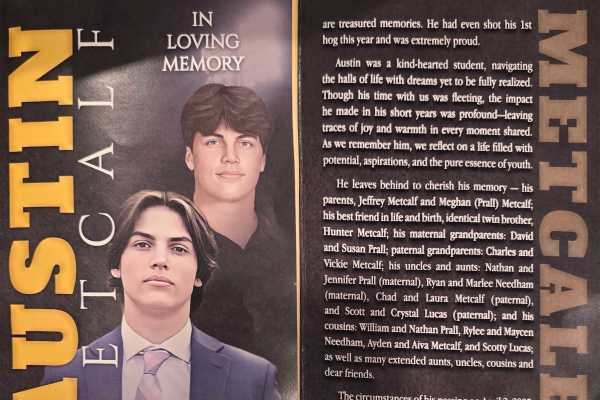History of Finance: Wall Street Corners Mark it
NEW YORK – The enduring symbols of Wall Street's fabled, turbulent history are inescapable on this walk through the epicenter of American capitalism.
Over there, at 23 Wall, is the former headquarters of J.P. Morgan's banking dynasty, its granite facade still scarred by pockmarks from a terrorist bomb that killed 33 people in 1920. A block away, a skyscraper at 48 Wall occupies the site of the city's first bank, founded by Alexander Hamilton in 1784. Names like Rockefeller, Roosevelt and Goldman Sachs are invoked at almost every turn.
The past, as outlined during a recent three-hour "Great Wall Street Crashes Walking Tour," takes on greater meaning in the current economic crisis — an ongoing story of boom and bust, bull markets and bailouts, recessions and recoveries.
October historically being the cruelest month on Wall Street, emphasis is on the October 1929 stock market crash that triggered the Great Depression and a decade of Dickensian deprivation for many Americans, that ended only with World War II.
"If we've learned anything from history, it is that history repeats itself," says Richard Warshauer, a real estate executive who founded the tour 20 years ago after the crash of 1987. His partner, James Kaplan, puts a more optimistic twist on that lesson: "Wall Street always comes back — every time there's been a crash, there's been a rebound. In order to have a rise, you have to have a fall."
On a recent rainy Saturday, Warshauer and Kaplan led some 30 people on the tour, which is offered annually, beginning at the Museum of American Finance, itself an engrossing presentation of history from the Dutch settlers of New Amsterdam to the modern Wall Street of glass and steel towers.
Warshauer and Kaplan noted that the United States had barely become a nation before facing its first economic crisis — the panic of 1792. Fortunately, Hamilton, wisely chosen by President George Washington to manage the nation's money matters as Secretary of the Treasury, rode to the rescue.
By having the federal government assume the new states' Revolutionary War debts and pay those off at 100 cents on the dollar, Hamilton established America's credit and credibility abroad, and himself as "the patron saint of American finance," Warshauer said.
Philadelphia remained the nation's financial capital until the 1820s when the new Erie Canal began carrying products from the Midwest to the port of New York. From then on, Wall Street became the center of commerce, he said.
From the museum — which, appropriately, occupies the former banking hall of Hamilton's Bank of New York — the tour moves to various points of historical interest.
That includes the New York Stock Exchange, with its huge American flag over the facade; the statue of George Washington fronting the rebuilt Federal Hall where he took the first presidential oath in 1789; and the bomb-pocked House of Morgan. Now converted to condos, it is only four stories tall because "Morgan said he didn't need to build a skyscraper," Warshauer said.
The Morgan dynasty, founded in the 1830s by paying insurance claims on an 1835 fire that leveled much of lower Manhattan, became the greatest force on Wall Street until broken up by the government in the early 20th century.
Despite its reduced clout, Warshauer said, it was J. Pierpont Morgan — to many the quintessential robber baron — who halted the panic of 1907 by summoning other top bankers to an emergency meeting that ultimately saved many smaller banks from failure, an action not unlike the recent federal bailout.
"He wouldn't let them leave until they had ponied up $25 million to go with another $25 million from the government," Warshauer said. "The parallels with today are scary."
Thirteen years later, a bomb, hidden in a horse-drawn cart, exploded in the middle of Wall Street at high noon on Sept. 16, 1920, hurling cast-iron shards for two blocks through the lunchtime crowd, killing 33 people and injuring more than 200.
Anarchists were suspected in what was the bloodiest terror attack in New York until 9/11, but the case was never solved. The pockmarks in the House of Morgan "are emblematic of what has happened on Wall Street," Kaplan said.
As for the popular tales of ruined Wall Street investors leaping to their deaths in the Crash of 1929, Warshauer says he has "no definite evidence of people jumping out of windows — I suspect it has been exaggerated over the years."
That historical collapse was followed by a slight rise in the market, but by 1932 the economy had "really begun to deteriorate, and by 1933, one fourth of all U.S. banks had failed," said Kaplan.
Franklin D. Roosevelt, who became president just as the Depression took hold, was a former Wall Street lawyer who Kaplan says "had never accomplished much," and "flailed around" before settling on actions to reinflate the economy — closing banks, setting up agencies to create jobs and taking bold steps to boost farm prices.
"FDR, whether true or not, is considered to be one of the saviors of the country," Kaplan said.
Other tour stops touch on the first Jewish immigrants to America in 1654 and the literal rags-to-riches tale of Marcus Goldman, a fabrics peddler who began dabbling in personal finance to help other small entrepreneurs, and with son-in-law Samuel Sachs and other relatives created what would become the investment banking powerhouse Goldman Sachs.
How successful that was, Kaplan said, is underscored by Robert Rubin and Henry Paulson, two chairmen of Goldman Sachs who later became Secretary of the Treasury.
The tour includes other locations of historical interest that are known only to dyed-in-the-cloth aficionados of finance.
Few people may know, for example, that the vest-pocket park called Hanover Square, now a memorial garden dedicated to British victims of the 9/11 terrorist attacks, was named for Britain's royal family — using the original German surname predating Windsor.
A short detour reaches the 1907 U.S. Custom House at Bowling Green, which once managed import tariffs that provided as much as two thirds of the federal government's revenue before the income tax.
Kaplan recalled it also was where a customs collector, Chester A. Arthur, was fired for requiring employees to kick back part of their salaries to the Republican party. A few years later he ran for vice president and became president when James A. Garfield was assassinated.
Standing on the Custom House steps, Kaplan pointed to the skyscraper at 26 Broadway that once housed Standard Oil, the company that gave new meaning to the word monopoly.
While few people might associate oil with New York City, John D. Rockefeller controlled 90 percent of the world's oil supply by 1900, prompting a backlash that led to Standard Oil's court-ordered breakup in 1911.
Another stop on the tour is India House, a circa 1850 edifice that once housed the Hanover bank and a gathering place for maritime industry leaders, now a restaurant and private club. A block away is the legendary Delmonico's restaurant frequented by such bygone celebrities as Mark Twain and Diamond Jim Brady.
The tour loops back to 40 Wall St., a 70-story skyscraper was for a few months in 1930 the world's tallest. After the Depression, it was home to the Chase Manhatttan Bank, descended from a company founded by Aaron Burr, who killed Hamilton, his sworn enemy, in a duel. In 1946, a U.S. Coast Guard plane struck the building in a fog, killing four people.
Neither Warshauer nor Kaplan claims that their tour of Wall Street's turbulent past foretells the future.
"Is this downturn going to be like the crash of 1929, or like the 1987 crash — where the market came back in 1 1/2 years and went up four times?" Warshauer says.
"But the great crashes of Wall Street are always followed by rebirth. So we are not pessimistic."






















